By Lori Souder
We arrived in Windhoek (pronounced with your best German accent – “Vind-huk”) and navigated through a well-organized customs line before being escorted to a VIP Lounge. We received a warm welcome and were invited to relax while awaiting our charter flight to the bush. As we settled in, the lounge attendant graciously offered us ice-cold drinks, coffee, and refreshments, though, in hindsight, it seemed designed to soften us up before the inevitable moment when each of us had to weigh our bags – always a dreaded ordeal on safari!
Our collective luggage exceeded the limit, and with six women, our body weights factored in, tough decisions had to be made. What were we going to leave behind? Mahjong tiles & a rollup game board? Not a chance- this group was ready to play! Hiking boots? Who needed those when Birkenstocks would suffice? Laptop? Unnecessary in the wild – time to unplug. Jeans? Not ideal for a desert safari – too hot. Even Savannah Guthrie’s latest book had to be sacrificed – Sorry, Savannah!
Wilderness Air Charters strictly enforces a 20kg (44 lbs) weight allowance per person, covering both hand luggage and camera bags, leaving no room for leniency. So, future travelers to Namibia, heed this cautionary advice: pack light or prepare to bid a temporary farewell to some of your ‘safari chic’ possessions. And for some of those reading this article, you might know exactly whom I’m talking about! (wink.wink.)
Finally, weight limit compliant, we were ready to fly! Namib desert, here we come!
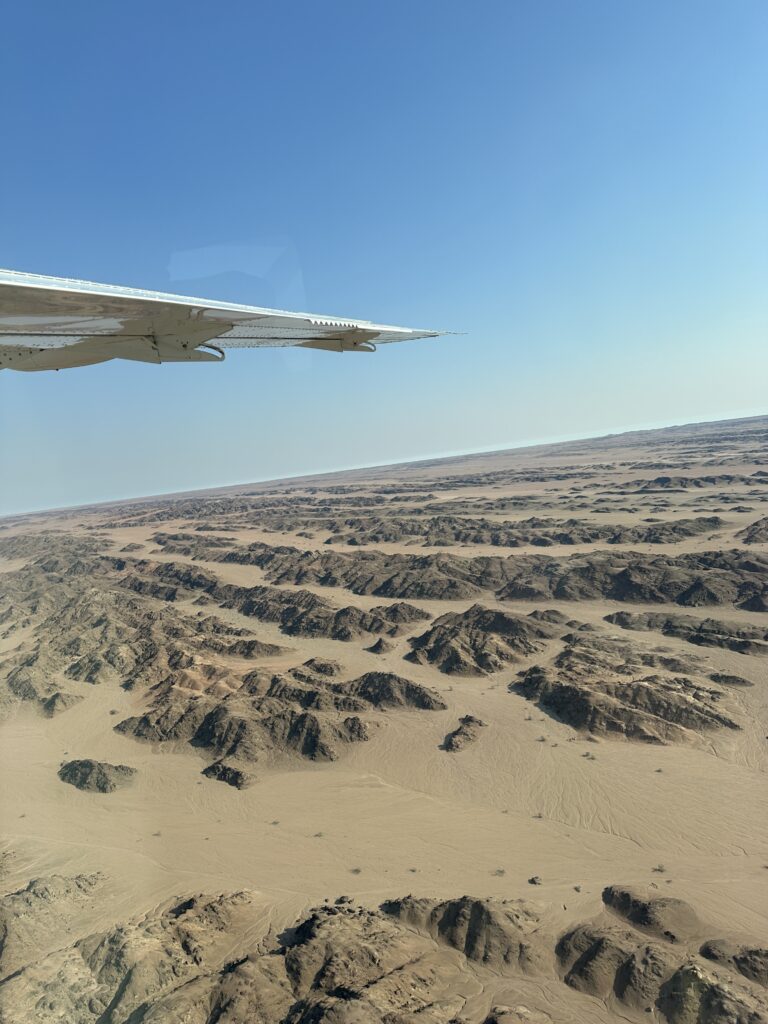
Flying over Namibia revealed its stark, desolate, awe-inspiring natural splendor. One of the oldest and most pristine landscapes on earth, the view at this elevation captivated us with its vast, mind-blowing beauty. Along the way, we encountered not only some pretty intense turbulence but towering dunes, majestic canyons, shifting deserts, and rugged mountains— all of this before reaching our first destination: the ethereal landscapes of Sossusvlei, where sky-high sand dunes and Deadvlei’s 900-year-old trees stand as guardians of time.

The Sossusvlei area had two must-do activities: climbing the massive dunes and taking a hot air balloon ride above them. We managed to do both, and each demanded some effort! The hot air balloon ride meant an early morning wake-up and a bumpy, pre-dawn, coffee-splashed drive to the launch site – not so bad and worth every coffee stain & expansive view from above! But, the real challenge came on the day we decided to climb one of two famous Namibian dunes, “Dune 45” or “Big Daddy.” We chose to tackle the BIG GUY!
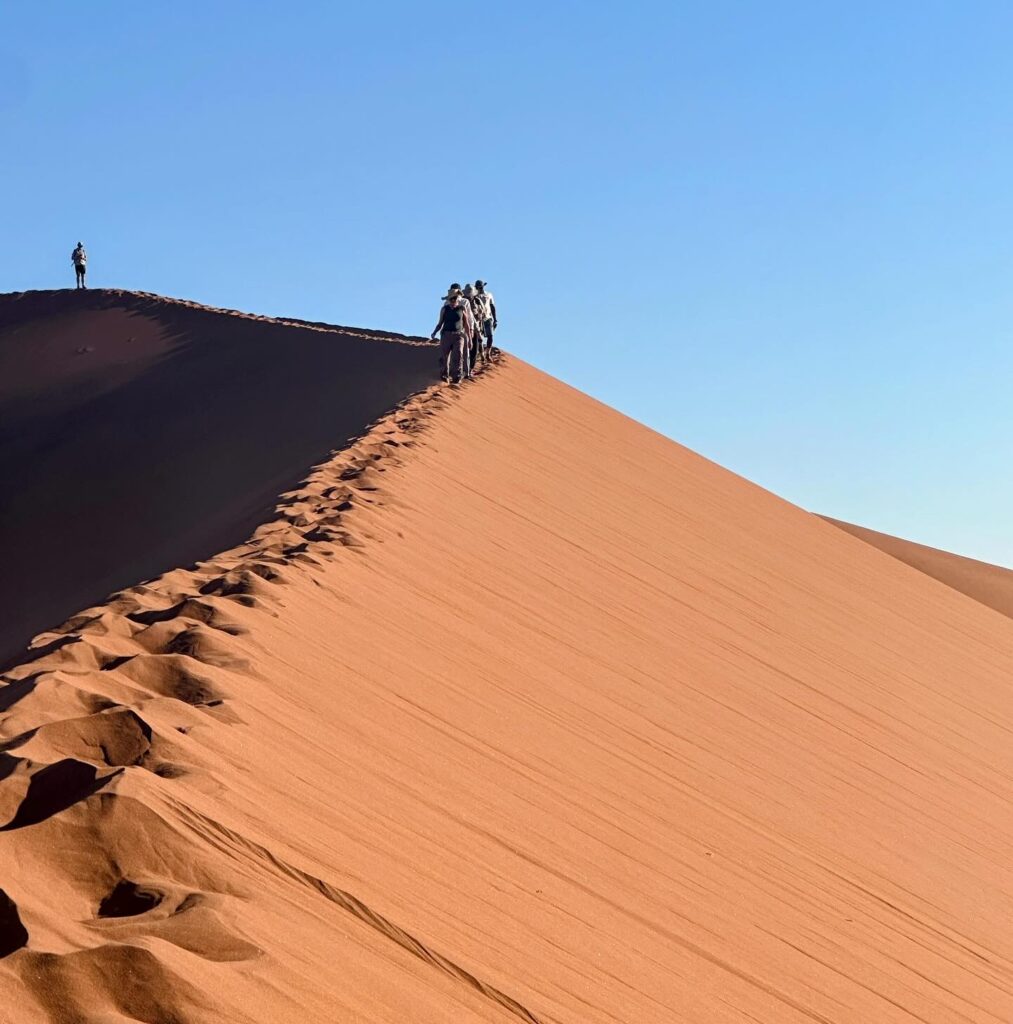

Big Daddy was breathtaking, standing at 325 meters high (1066.27 feet). On that scorching day, with temperatures soaring into the high 90s, we slogged along the razor-edge crest of the dune, our shoes filling with fine red sand, each step weighing us down. Between the intense heat and the nervousness of potentially tumbling like a snowball over the steep slopes, we proceeded cautiously, placing one foot carefully in front of the other, too afraid to pass the snail-paced trekkers in front of us and too polite to ask them to step aside. We inched slowly up the crest, wondering if it was time to turn back or tumble down. Then, something magical happened: we discovered the freeing ability to bounce down the steep, angled slopes of the dune, skipping effortlessly into the white clay pans of Deadvlei!
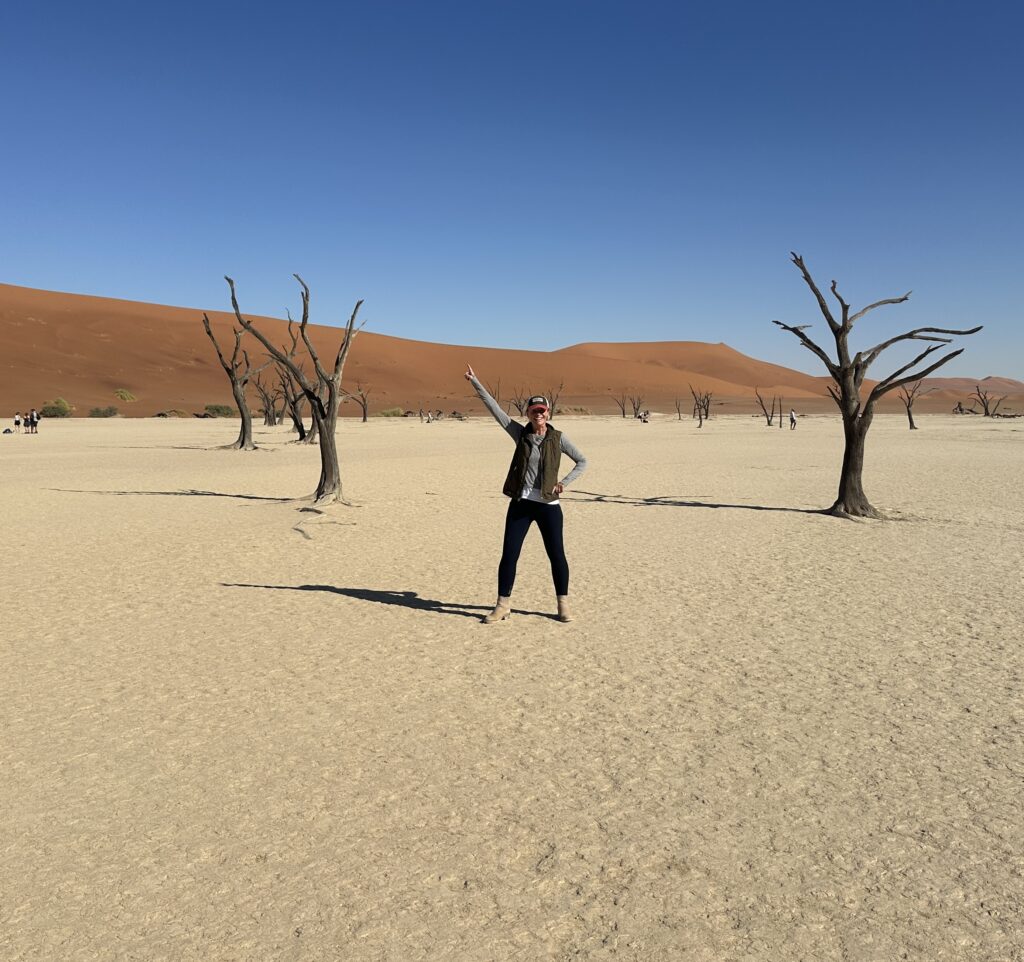
The ancient trees of Deadvlei appeared frozen in time, standing amidst what is known as the dead marsh. Resembling sculptures from a Dr. Seuss storybook, these trees grew millennia ago when the Tsauchab River overflowed, creating temporary shallow pools that nurtured camel thorn trees. Over centuries, drought claimed these trees, leaving behind stark, blackened skeletons exposed to the relentless sun.

In the intense heat, we zigzagged across the astonishing cracked, white clay pan of Deadvlei, capturing photos of the trees. Amidst our explorations, we couldn’t resist taking selfies and even attempting John Travolta’s Saturday Night Fever dance moves and our very best impression of the ‘tree pose’. Eventually seeking refuge from the sun, we found reprieve in the stick-figure shadow cast by one of Deadvlei’s ancient inhabitants and savored the last drops from our water bottles.
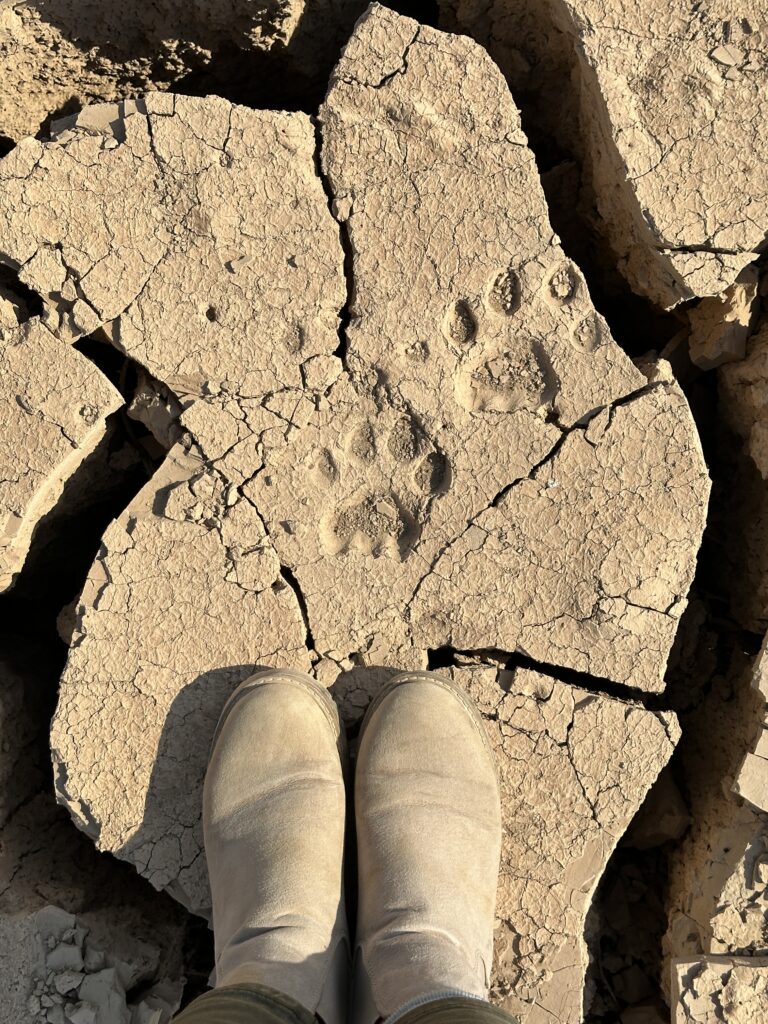
Lion tracks
Water is scarce in the Namib landscape, and the untamed expanse of the Hoanib River Valley was no exception. While the “river valley” is a refuge for wildlife amidst the harsh desert landscape, the river was more a swathe of sand than an actual river, flowing only every few years when heavy rainfall occurred in the central escarpments. Desert-adapted animals roam freely here, exhibiting remarkable adaptations to survive in the challenging, arid terrain.
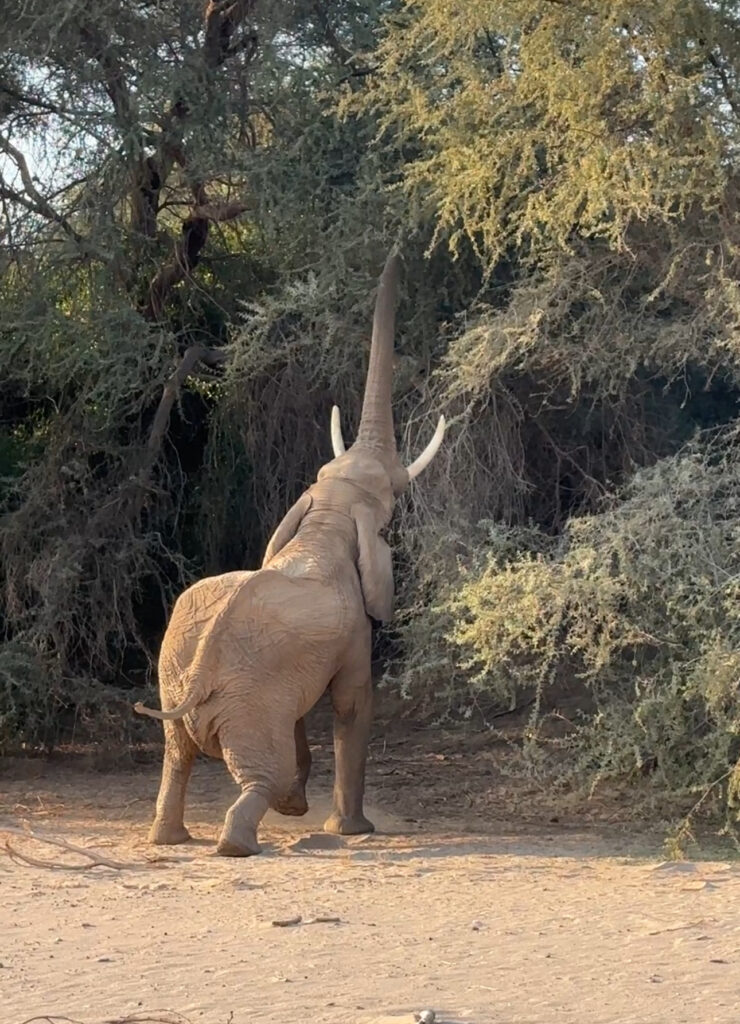
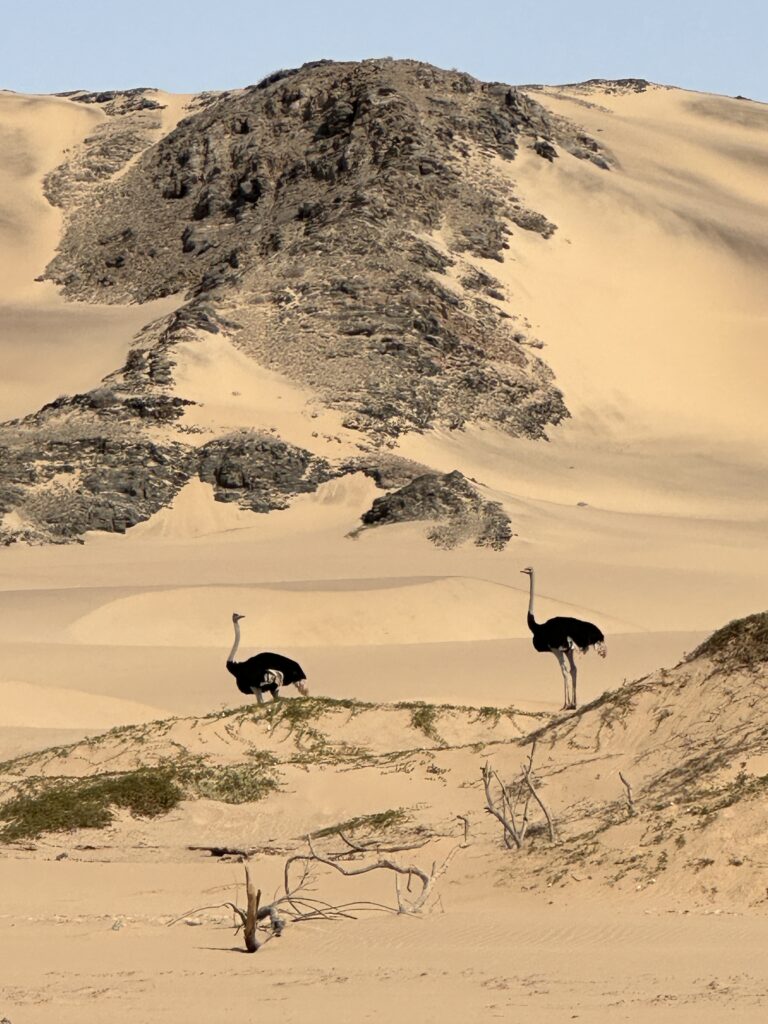
For instance, the Gemsbok or Oryx, Namibia’s National Symbol, are well suited for desert life as they can go for long periods without drinking water, obtaining moisture from the plants they eat. Elephants in this region have longer legs and larger feet than typical African elephants. This adaptation is to help them traverse vast distances in search of water and food. We were also told elephants here tended to be more gentle with the trees they ate, careful not to destroy the tree growth, as if to maintain their food source by not devouring it entirely. Lions in the Namib desert live in small prides, survive on minimal water, and hunt more opportunistically, often scavenging and preying on smaller mammals, such as birds. It was astonishing to witness and learn how so many animals of the Namib desert navigated this unforgiving environment in search of sustenance & water.
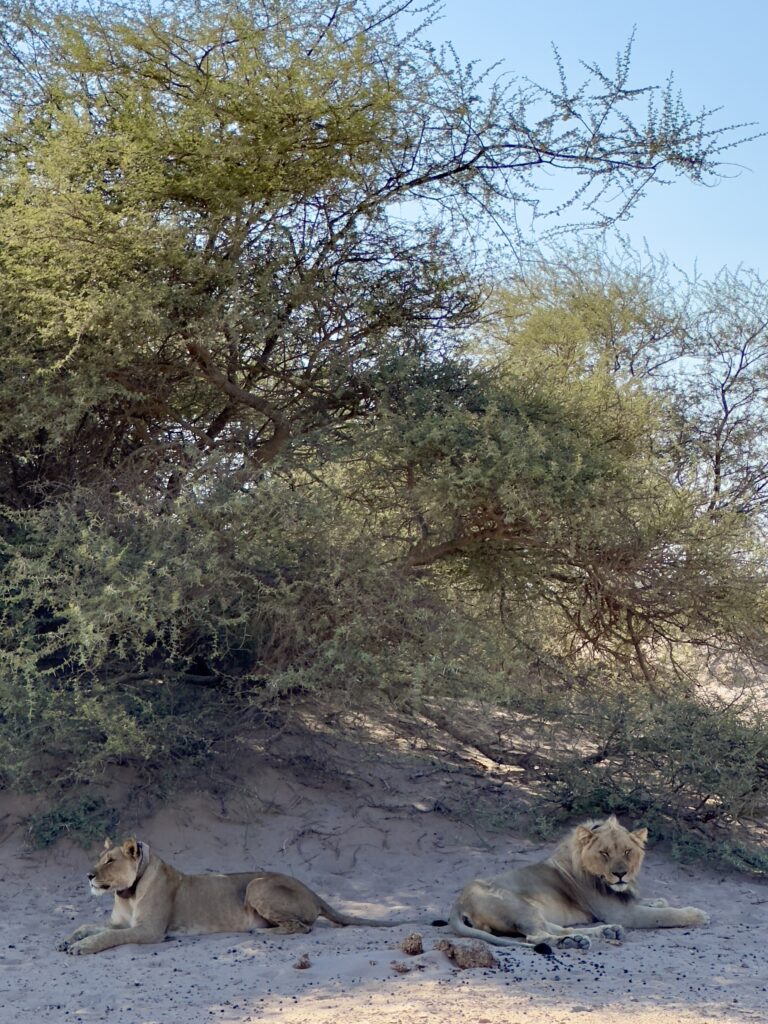
‘Charly’ with her “Lion King’
During our safari, we had the good fortune of seeing a once-lone lioness named ‘Charly.’ Over the last few months, she had formed a partnership with a handsome young male lion, who had recently been relocated to the area due to threats from human-wildlife conflict with a local community. Thankfully, he was given a second chance with the hope he would expand the gene pool for the Hoanib Valley desert lions. From our vantage point, it looked as though he had found his soul mate in Charly. We were privileged to witness them together—enjoying a beautiful sunset before setting off for a hunt! Observing these wild creatures in their natural habitat is always a privilege, but it felt even more profound here in the desert. Cue –The Lion King’s “Can You Feel the Love Tonight”!

Leaving the desert behind, we traversed the craggy terrain in our land cruiser, tracked lion prints, and zoomed over garnet-dusted dunes on a journey westward to the Skeleton Coast.


Skeletons of the Skeleton Coast
Named for the countless shipwrecks that litter its shores, this desolate landscape was haunting and mesmerizing, with dunes that cascaded into the icy, adrenaline-boosting waters of the Atlantic Ocean. Here, we explored the beach, followed jackal and hyena tracks, collected seashells and animal bones, and encountered the world’s largest colonies of Cape Fur Seals. The smell of seal guano was so overpowering that it required us to cover our faces like bandits to avoid the nostril-searing stench. Suffice it to say, the seals were endearing, their fragrance not so much!
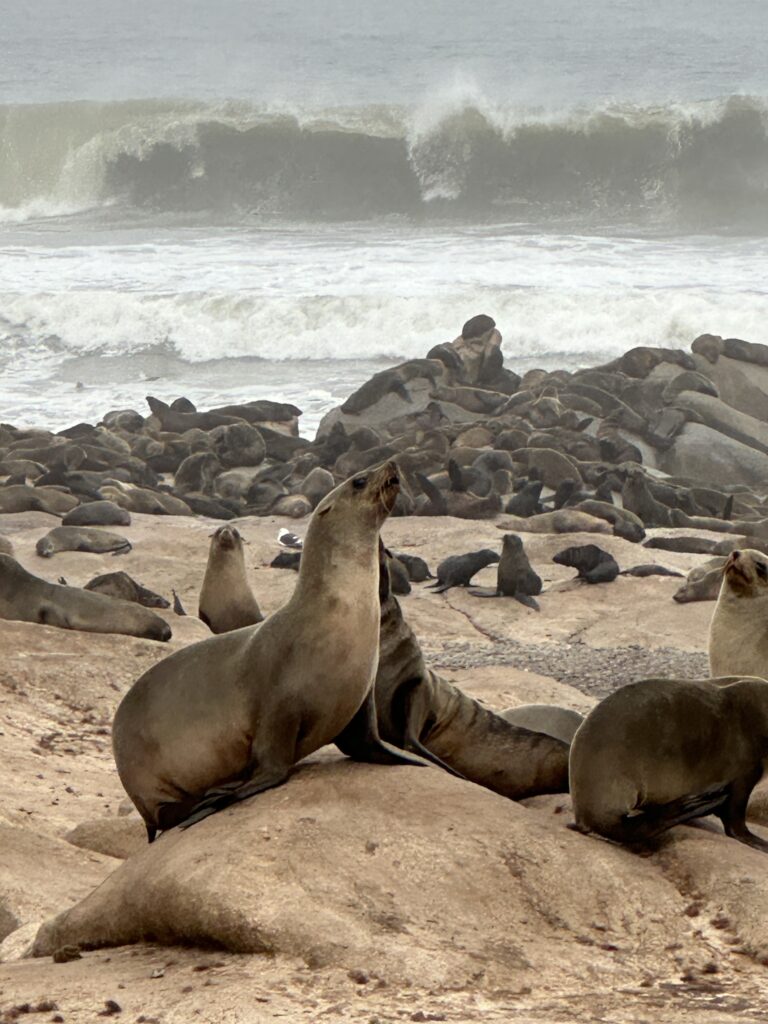
Seals of the Skeleton Coast
Far away from the stinky seal colonies, we were surprised with an epic beach picnic spread complete with multiple bottles of rosé, homemade chutneys, jarred sweet pickles, and fresh shrimp Paella cooked over a fire. Here, against a backdrop of the crashing waves and fog rolling in off of the ocean, we raised a glass to our talented chef, our mutual love of Africa, friendships (new and old), and our immense fortune of witnessing the fragile balance of life in this remote part of the world.

Picnic Site on the Coast
Our adventure reached new heights in the following days when we took to the skies in a small aircraft bound for Serra Cafema, a luxury safari camp in northern Namibia. Soaring through the cloudless sky, a patchwork of desert, dry river beds, and mountains unfolded below us. And, once again, we were reminded of the sheer magnitude of this land, a mosaic of contrasting ecosystems shaped by millennia of geological forces.

Circling over the barren mountains, we spotted a belt of green and our first true river of the trip. It was filled to the brim with water, its edges lush with vegetation—a refreshing sight after spending the last six days in the desert heat. This was the Kunene, an ever-flowing perennial river that forms a natural border between Namibia and Angola.
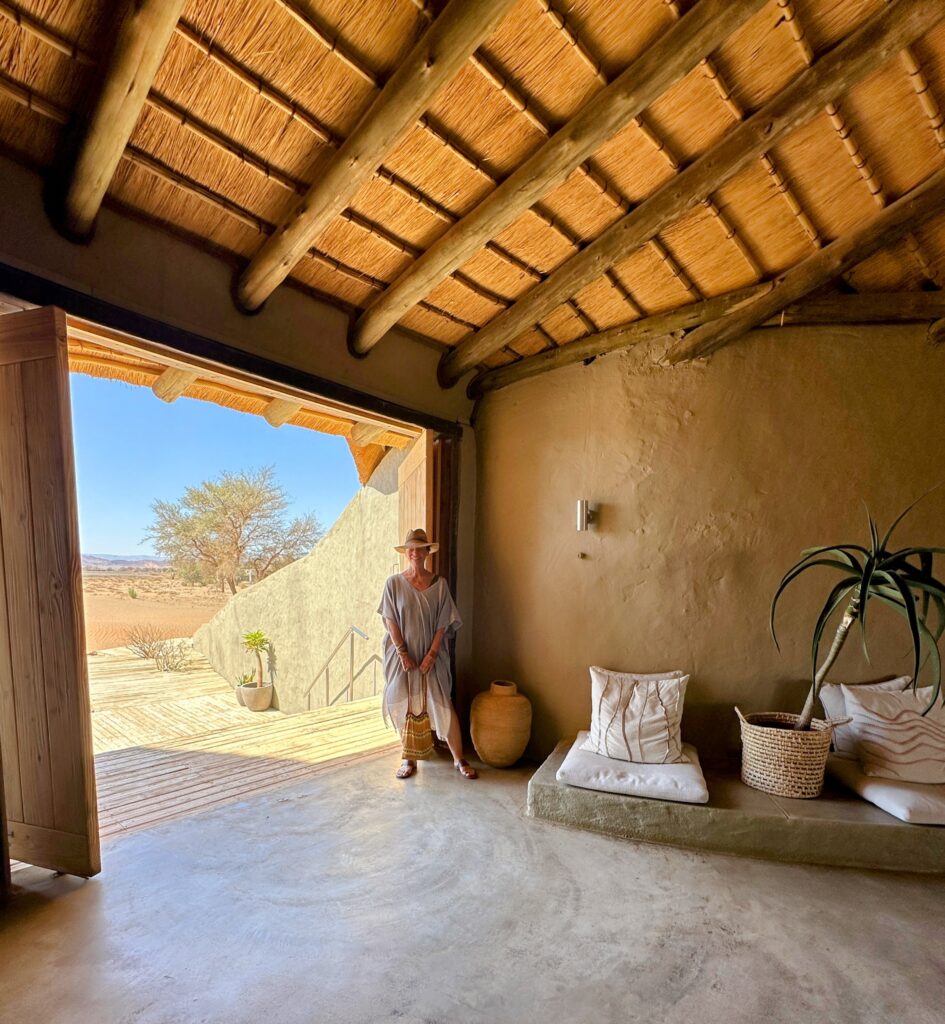
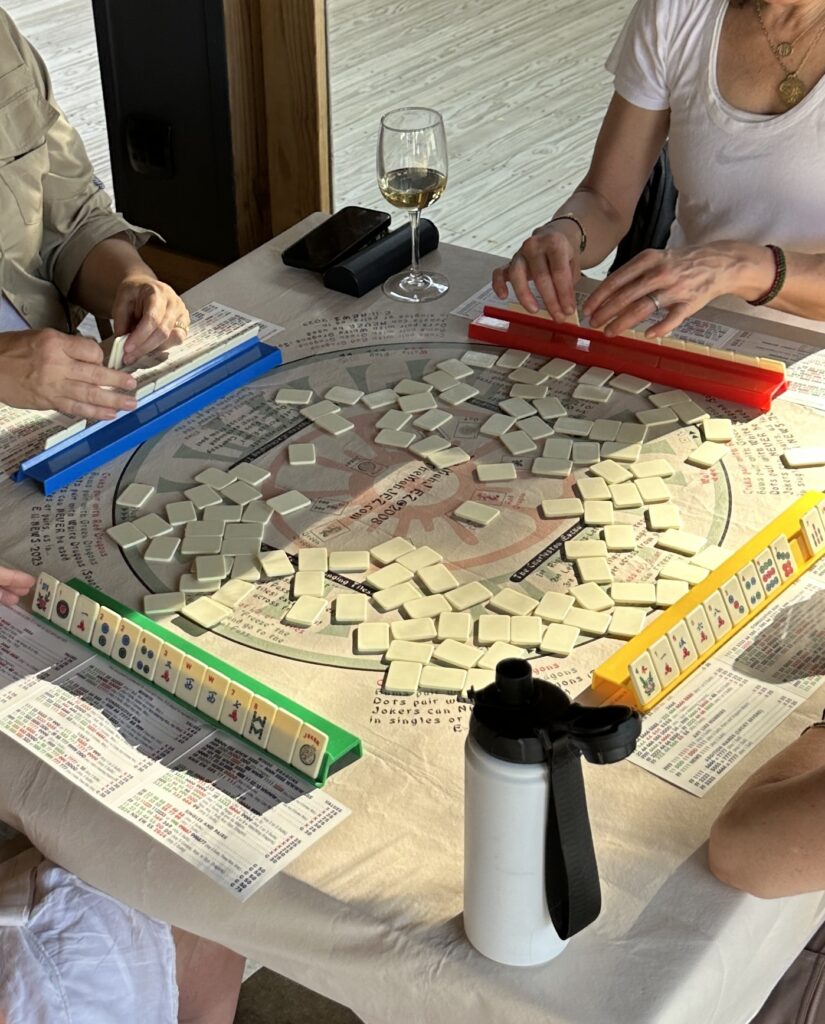
Playing Mahjong on Safari
Landing on a sandy airstrip not far from the river, we were greeted by the warm hospitality of our Himba guide, Stanley. Stanley, who was born into the Himba tribe but no longer lives the traditional lifestyle of the Himba people, was the perfect person to teach us about one of the last semi-nomadic peoples of Africa. But, before we were immersed in the Himba’s rich cultural heritage, we set off for our camp, Serra Cafema, built in the riverine forest along the winding banks of the Kunene.


Hoanib Skeleton Coast Camp
From Serra Cafema, we explored Martian landscapes and learned of the age-old traditions of the local Himba people. This unique cultural immersion was a highlight of our journey, offering a rare glimpse into a rapidly disappearing way of life for one of Africa’s oldest tribes. Sadly, even our guide, Stanley, the most incredible conduit between the Western world and his beautiful people, found it challenging to straddle a modern way of life and his traditional life as a Himba.

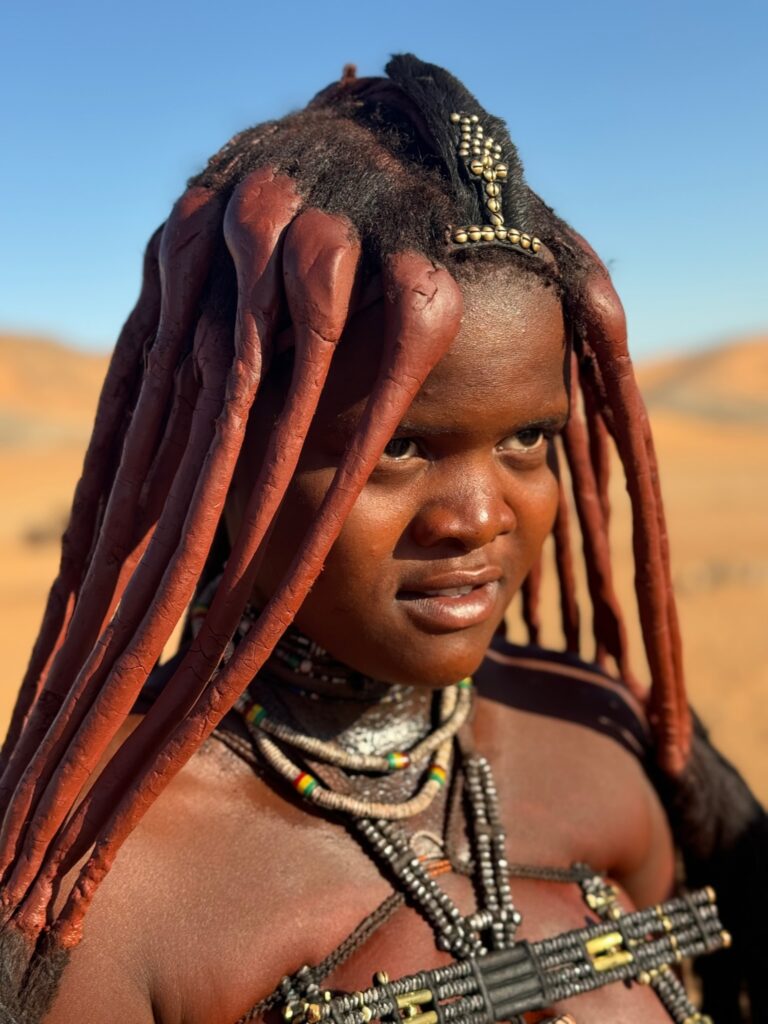
As our time in Namibia was fast approaching, we had one last exciting adventure in store – a riverboat safari. We gathered at the camp dock before dusk on our last day and boarded our little motorboat bound for sundowners. As with every safari, nothing can be predicted, not the weather, animal sightings, or even the twists and turns of a winding river and where it might lead. Soon, Stanley navigated us towards the shore, and we landed on the sandy banks. Surprise! We had unexpectedly arrived in ANGOLA!

Here, in another African country, we left our footprints in the sand. We shared our time with the curious rock-dwelling baboons of this area. More than once, the cheeky primates launched a small rock in our direction, possibly to get our attention or maybe to chase us away. But we stood tall and poured our drinks. We had another glorious African sunset to witness!
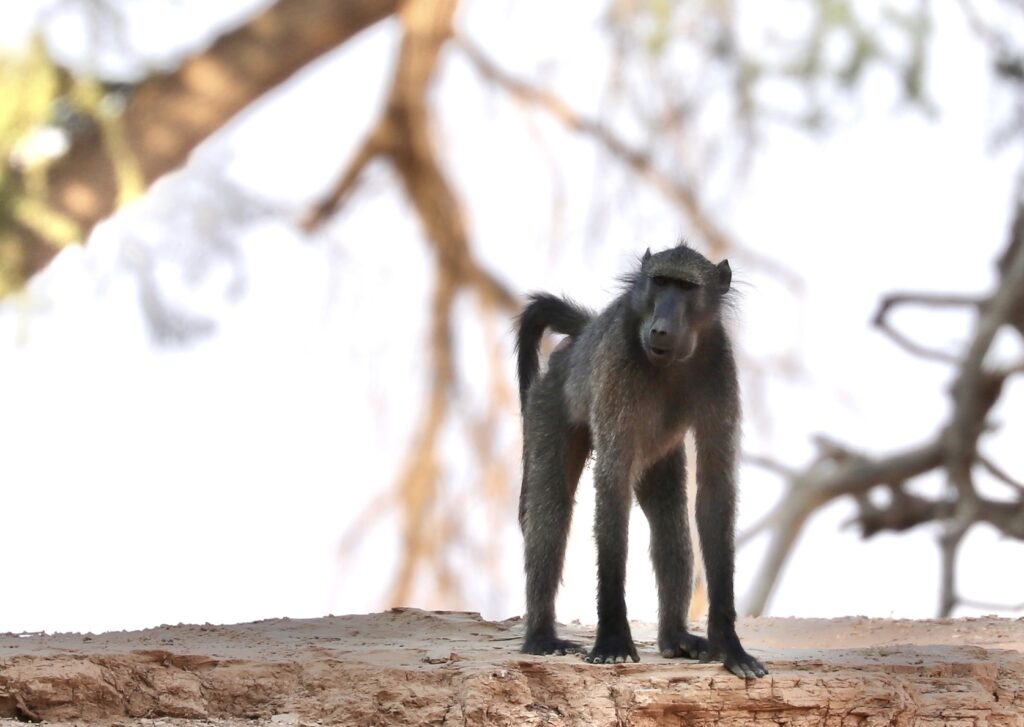
Curious baboon
And, as the fiery orb of orange dipped below the horizon, we raised our glasses of chardonnay and G&Ts one last time to toast our good fortune of being in this remote corner of the world, surrounded by the timeless beauty of the African wilderness and the enduring spirit of adventure that keeps calling us back to this great continent.

Sunset Cheers!
—-
Editors Note:
In 2009, an encounter with wild elephants during a Kenyan safari sparked Lori Souder’s passion & awareness for the urgent need to protect Africa’s elephants from extinction. Fueled by this impactful experience and the remarkable individuals she met, who were tirelessly committed to preserving this magnificent species, Souder immersed herself in elephant conservation. As a result, she began to curate authentic, bespoke safaris for friends and family, providing them with firsthand experiences to witness the on-the-ground efforts dedicated to saving the world’s largest land mammal.
In 2017, she solidified her dedication by founding “Here Today, Africa Tomorrow (HTAT Journeys),” a travel company committed to supporting conservation. Specializing in bespoke safaris to Africa, HTAT Journeys curates authentic experiences and advocates for local communities, wildlife, and ecosystems. Through her decade-long dedication, Souder has built a solid foundation of support, significantly contributing to the cause of African Elephant Conservation.
In April 2024, Souder led her latest group adventure to Namibia.






